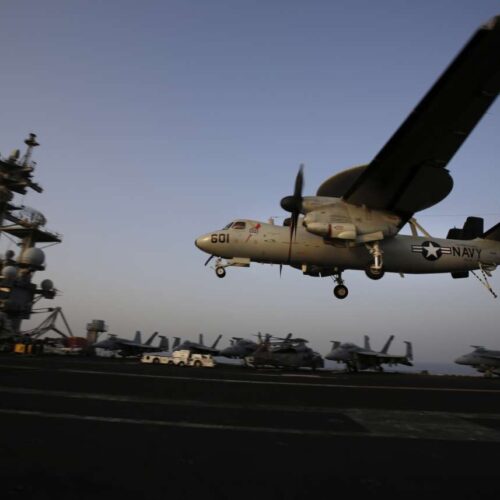Introduction
Last year, the world’s military spending increased for the first time in four years, a directional shift that may herald even higher spending on armaments and operations in years to come, according to new data compiled by the Stockholm International Peace Research Institute (SIPRI).
The world heaped more than $1.6 trillion on military programs and personnel in 2015, roughly 1 percent more than in 2014, a SIPRI analyst declared at the nonpartisan Stimson Center in Washington, D.C. on April 5. The increase follows four years of decline, which was preceded by 12 years of steady increases.
So the brief falloff is over, and the familiar routine is back.
“The dynamic for state spending has changed everywhere,” Aude Fleurant, Director of the Arms and Military Expenditure Programme at SIPRI said during a panel discussion. Many non-western countries in particular increased their military spending in 2015, she said.
“There’s a possibility that this is a transitional year.” Fleurant added. If spending continues to rise, it would make the decreases between 2011 and 2014 insignificant, she said. Fleurant noted, however, that the evidence was not clearcut, because some countries boosted spending due to conflicts while others cut spending due to economic pressures.
It’s “a very interesting moment,” Gordon Adams, a former White House budget official and emeritus professor at American University said at the Stimson event. “The era of the drawdown is over.”
In 2015, the United States was still the world’s largest military spender — its $596 billion accounting for 36 percent of the world’s military spending, according to SIPRI’s data. China was in a distant second place, increasing its defense spending by 7.4 percent to reach an estimated $215 billion. Saudi Arabia surpassed Russia to become the third largest defense spender, spending $87.2 billion in 2015. Russian military spending was estimated at $66.4 billion.
Current U.S. spending is well below the $711.3 billion spent in 2011, and 2.4 percent lower than in 2014, SIPRI said. Overall U.S. and Western European military spending remains lower than it was in 2006. But the Obama administration has proposed to boost U.S. military spending by roughly 0.4 percent in 2017, making the decline “probably the most shallow…. that we’ve seen since the end of the Second World War,” Adams said.
SIPRI’s tallies include spending on the armed forces, defense ministries, paramilitary forces, military research, space activities and peacekeeping forces.
Overall spending in Asia, East Europe, and Oceania went up. Conflict in Ukraine pushed spending by Central European countries up by 13 percent. A drop in global oil prices moderated an expected military spending increase in Russia, SIPRI said, and forced South American military spending to drop by 4 percent in 2015. Countries such as Venezuela, Ecuador and Brazil in particular had much less to spend.
SIPRI was unable to provide a regional estimate for the Middle East, noting large uncertainties about military spending in Kuwait, Qatar, Syria, the United Arab Emirates, and Yemen. For nations such as China, SIPRI could only provide an estimate, since China does not publicize all its spending and SIPRI draws its conclusions from official statements and open source spending data. Several Central Asian republics do not publish figures, and Saudi Arabia only announces what they plan to spend, not what they actually spent.
Lauren Chadwick is a Herbert Scoville Jr. Fellow at the Center for Public Integrity.
Read more in National Security
National Security
‘The army to set our nation free’
Former Sheriff Richard Mack has a plan to roll back gun control, tax laws and land-use constraints, one defiant local law enforcement official at a time
Up in Arms
Debunked: Terrorist attacks often occur in clusters
Terror attacks are not more likely on holidays or shortly after other attacks, experts say


Join the conversation
Show Comments